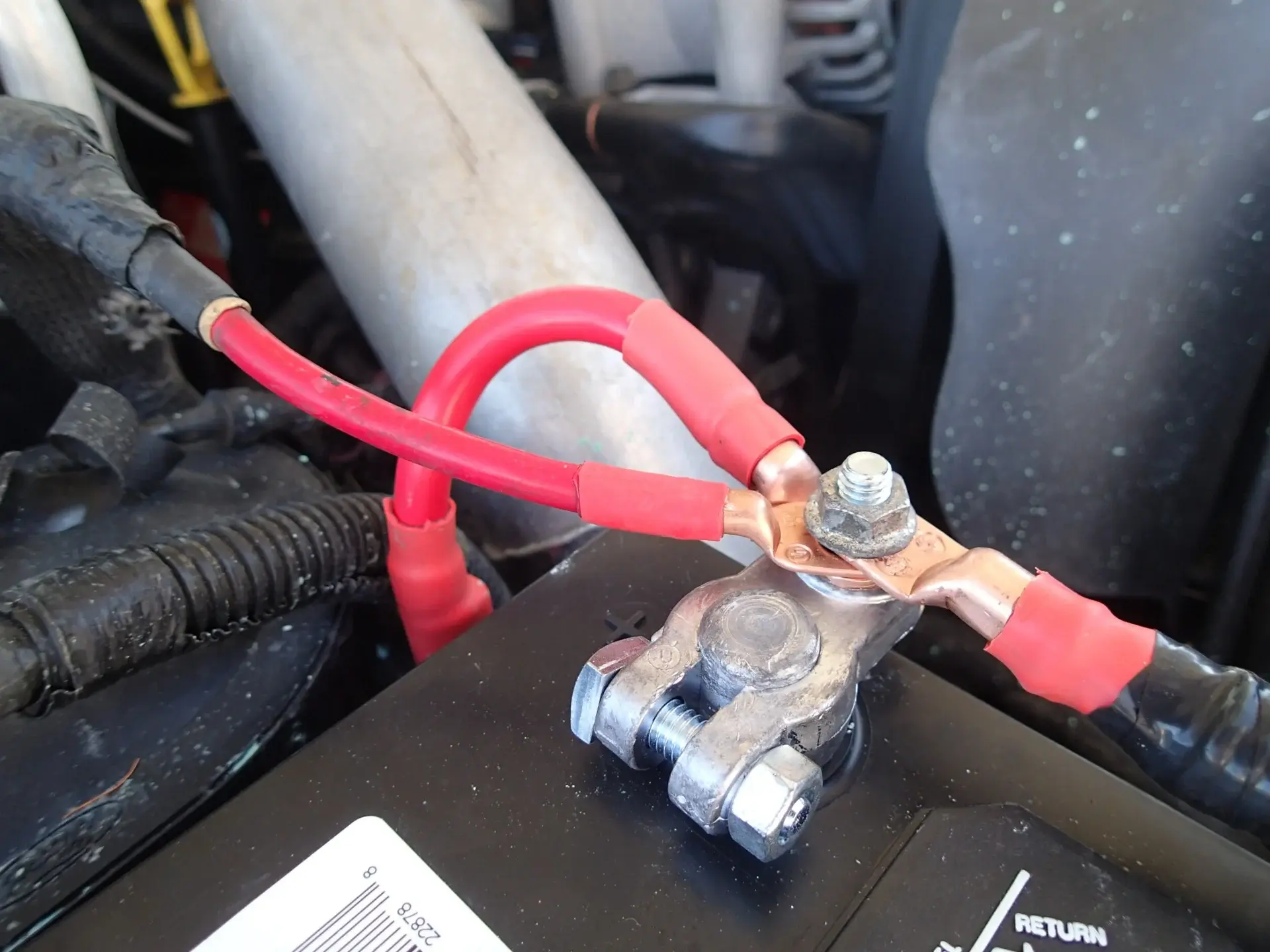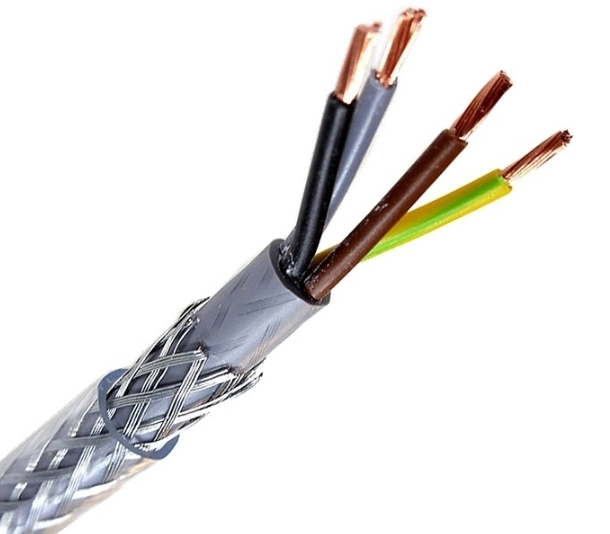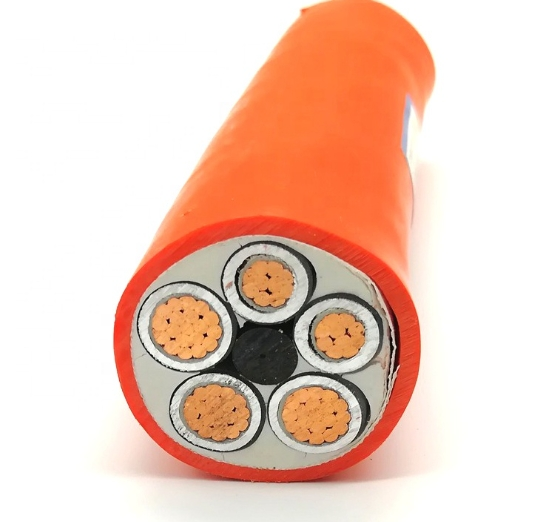The importance of batteries is self-evident, but people often overlook the role of battery cables. Whether in vehicles or other applications, they all require battery cables to transfer the power from the battery to connected devices. Therefore, the choice of battery cable size is critical to the performance and safety of electric systems and should be emphasized. Incorrect size could lead to system breakdown and even cause safety hazards.

In this battery cable size guide, we will delve into the factors involved in choosing the correct battery cable size and provide valuable guidance to help you make rational decisions.
What size battery cable do I need?
The battery cable size you need depends largely on the specific application requirements and current capacity. And the size is usually represented by AWG, which indicates the cross-sectional area.
When determining the battery cable size, you should consider the following factors:
- Maximum current the cable will carry: is the sum of the current requirements of all electrical components connected to the battery. The current can be calculated based on load The formula is W=VA, where W is the power, V is the voltage A is the current, i.e., electrical power = the product of voltage and current. For example, if the power of the TV is 75 watts, the grid voltage is 220 volts, then the current (A) = 75W/220V ≈ 0.34A
- Cable Length: Measures the distance between the battery and the component needing power and chooses the right cable length. A too-long battery cable wire has a higher resistance, which will cause a voltage drop. And too short battery cable may have fire risk.
- Voltage drop: Different devices have specific voltage requirements, and exceeding acceptable voltage drops can lead to performance problems or equipment damage. Voltage drop can be calculated by V = I * R(Ohm’s law), in which V represents the voltage drop, I means the current, and R represents the resistance. Automotive applications typically allow a maximum voltage drop of 0.1 to 0.3 volts, while sensitive electronics may require lower.
- Refer to the battery cable size calculator: Once you have the current capacity, cable length, and acceptable voltage drop, you can refer to a battery cable size chart or use an online wire size calculator. These tools provide recommended wire gauges for various current capacities and cable lengths.
- Slightly larger size: Choose a cable gauge that is slightly larger than the load requirement, because thinner cables have a risk of overheating, melting, and burning when the current is too large. And electricity demand is likely to increase
Here’s a recommendation for battery cable wire length and amperage at 12 volts:
| Recommended 12v Battery Cable Length and Amperes Chart | |||||
|---|---|---|---|---|---|
| 50 Amps | 100 Amps | 150 Amps | 200 Amps | 300 Amps | |
| 6 Gauge Battery Cable | 11.8 ft | 5.9 ft | 4.4 ft | 2.9 ft | 2.2 ft |
| 4 Gauge Battery Cable | 18.8 ft | 9.4 ft | 6.3 ft | 4.7 ft | 3.1 ft |
| 2 Gauge Battery Cable | 29.8 ft | 14.9 ft | 9.9 ft | 7.4 ft | 4.9 ft |
| 1 Gauge Battery Cable | 37.7 ft | 18.9 ft | 12.6 ft | 9.4 ft | 6.3 ft |
| 1/0 Gauge Battery Cable | 47.5 ft | 23.8 ft | 15.9 ft | 11.9 ft | 7.9 ft |
| 2/0 Gauge Battery Cable | 60 ft | 30 ft | 20 ft | 15 ft | 10 ft |
| 3/0 Gauge Battery Cable | 75.6 ft | 37.8 ft | 25.2 ft | 18.9 ft | 12.6 ft |
| 4/0 Gauge Battery Cable | 95.2 ft | 47.6 ft | 31.7 ft | 23.8 ft | 15.8 ft. |
By fully considering the above factors and this 12v battery cable size chart, you can select the right wire for car battery, ensuring the safety and reliability of your electrical system.
And if you happen to have a spare battery cable wire in the automobile but don’t know its size, then you’ve come to the right place.
How to measure battery cable size?
To measure the size of the battery wire, you can follow these steps:
Step 1: Prepare a vernier caliper, a tool for properly measuring the diameter of the cable.
Step 2: Take out the cable; if it has insulation, strip a small portion to expose the bare conductor. Make sure the stripped section is clean and has no corrosion or debris.
Step 3: Hold the caliper perpendicular to the cable surface and gently close the clamp until it touches the cable (i.e., the widest part of the cable cross-section), taking care not to deform the cable. Then read the measurement value, which represents the diameter of the cable.
Step 4: Calculate the conductor’s cross-sectional area according to its diameter. The formula for cross-sectional area is A = πr², where A is the area and r is the radius (half of the diameter), or the formula A=(π/4)x(diameter)^2 is also applicable. Generally, 10mm battery cables are relatively smaller cable sizes.
Step 5: Refer to a wire gauge chart: Compare the cross-sectional area to American Wire Gauge (AWG) table to find the most closed AWG size. Or you can continue browsing, as we have provided a conversion table between the common battery cable cross-sectional area and AWG below.
Battery cable sizes in mm
In Europe and America, especially in North America, AWG (American Wire Gauge) is the most commonly used wire size standard; however, in other regions, the IEC standard is usually preferred, which may cause some confusion. Therefore, here we provide some common battery cable sizes in millimeters and their current capacity:
| AWG Size | Cross-sectional Area (mm²) | Current Carrying Capacity (Amperes) |
|---|---|---|
| 6 Ga Battery Cable | 13.3 | 37 |
| 4 Ga Battery Cable | 21.2 | 60 |
| 2 Ga Battery Cable | 33.6 | 94 |
| 1/0Ga Battery Cable | 53.5 | 150 |
| 2/0Ga Battery Cable | 67.4 | 190 |
| 3/0Ga Battery Cable | 85.0 | 239 |
| 4/0 Ga Battery Cable | 107.2 | 302 |
It is easy to tell from the above diagram that battery cables typically have larger sizes due to the high currents they are designed to carry, and you may notice that whether it is solar battery cable size or marine battery cable size, they are generally thicker than other types of wire. So, what causes this?
Why are battery cables so thick?
Battery cables are usually thick, which has to do with the high currents they need to carry and the specific requirements of the battery system, and here are several key reasons for this:
- Current-carrying capacity: Battery cables are responsible for carrying high currents from the battery to various electrical components in a vehicle or system. Thicker cables have lower resistance, which allows them to handle higher current loads without excessive voltage drops, ultimately ensuring efficient power transmission.
- Heat dissipation: Large currents will generate heat as they pass through resistance. Thicker battery wires have a larger surface area, facilitating better heat dissipation, which is particularly important for battery cables, as excessive heat could lead to insulation damage or even fire hazards.
- Durability and mechanical strength: Battery cables are often subjected to physical stress, vibration, and environmental factors in automotive applications. Thicker cables tend to be more robust and resistant to damage caused by bending, pulling, or abrasion, ensuring their longevity and reliability in demanding conditions.
- Safety considerations: Thicker cables provide enhanced safety by minimizing the risk of electrical fires or short circuits caused by high currents. They can handle higher fault currents without melting or burning, reducing the likelihood of electrical hazards.

Overall, the thickness of battery cables is essential for efficient power transmission, minimizing voltage drops, ensuring safety, and withstanding the high current demands of automotive, marine, or other applications that rely on battery power.
Conclusion:
All in all, by this point in the article, you must have a deeper understanding of battery cable selection, measurement, performance, and sizing. Correct heavy-duty battery cables size can achieve the desired goal and maximize the benefits, and the consequences of choosing the wrong size could be unbearable. These methods above can guide you in some directions and reduce unnecessary losses.
If you do not want to put too much thought into battery cable size selection, come to ZW Cable and we will provide you with one-stop services, which can greatly save you precious time. As a battery cable manufacturer, ZW Cable has earned the trust and praise of customers worldwide for its superior quality and innovative technology. And we trust that our prices will satisfy you as well.
If you are searching for a # 4 gauge battery cable near me, welcome to ZW Cable.






